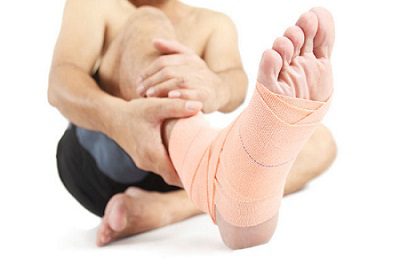
7 Common Sport Injuries
 With school starting back up, that means the fall sports are too. Parents, we know that you want to keep your athlete safe this season so they can be the best. Our agents have experience as both athletes and coaches and understand how a little injury can lead to a bigger problem. Here are seven common sports injuries to be on the lookout for and tips to treat them. Here are some specific tips for treating each of the most common sports injuries:
With school starting back up, that means the fall sports are too. Parents, we know that you want to keep your athlete safe this season so they can be the best. Our agents have experience as both athletes and coaches and understand how a little injury can lead to a bigger problem. Here are seven common sports injuries to be on the lookout for and tips to treat them. Here are some specific tips for treating each of the most common sports injuries:
1. Ankle sprain
What it is: Most athletes have experienced a sprained ankle, which typically occurs when the foot turns inward. This turning stretches or tears the ligaments on the outside of the ankle, which are relatively weak.
What you can do: With an ankle sprain, it’s important to exercise to prevent loss of flexibility and strength — and re-injury. You can ask your doctor or physical therapist to help you know what kinds of exercise you should do.
2. Groin pull
What it is: Pushing off in a side-to-side motion causes strain of the inner thigh muscles, or groin. “Hockey, soccer, football, and baseball are common sports with groin injuries,” says Royster.
What you can do: Compression, ice, and rest will heal most groin injuries. Returning to full activity too quickly can aggravate a groin pull or turn it into a long-term problem.
3. Hamstring strain
What it is: Three muscles in the back of the thigh form the hamstring. The hamstring can be over-stretched by movements such as hurdling — kicking the leg out sharply when running. Falling forward while waterskiing is another common cause of hamstring strains.
What you can do: “Hamstring injuries are slow to heal because of the constant stress applied to the injured tissue from walking,” says Royster. “Complete healing can take six to 12 months.” Re-injuries are common because it’s hard for many guys to stay inactive for that long.
4. Shin splints
What they are: Pains down the front of the lower legs are commonly called “shin splints.” They are most often brought on by running — especially when starting a more strenuous training program like long runs on paved roads.
What you can do: Rest, ice, and over-the-counter pain medicine are the mainstays of treatment.
5. Knee injury: ACL tear
What it is: The anterior cruciate ligament (ACL) holds the leg bone to the knee. Sudden “cuts” or stops or getting hit from the side can strain or tear the ACL. A complete tear can make the dreaded “pop” sound.
6: Knee injury: Patellofemoral syndrome
What it is: Patellofemoral syndrome can result from the repetitive movement of your kneecap (patella) against your thigh bone (femur), which can damage the tissue under the kneecap. Running, volleyball, and basketball commonly set it off. One knee or both can be affected.
What you can do: Patience is key. Patellofemoral pain can take up to six weeks to clear up. It’s important to continue low-impact exercise during this time. Working out the quadriceps can also relieve pain.
7. Tennis elbow (epicondylitis)
What it is: Repetitive use of the elbow — for example, during golf or tennis swings — can irritate or make tiny tears in the elbow’s tendons. Epicondylitis is most common in 30- to 60-year-olds and usually involves the outside of the elbow.
What you can do: Epicondylitis can usually be cleared up by staying off the tennis court or golf course until the pain improves.
The PRICE principle for treating common sports injuries. Using the PRICE method to treat any common sports injury will help get you back in the game sooner.First, it’s important to know that swelling is a normal response to these injuries. Excessive swelling, though, can reduce range of motion and interfere with healing. You can limit swelling and start healing faster after common sports injuries by using the PRICE principle:
-
P — protect from further injury
For more severe injuries, protect the injured area with a splint, pad, or crutch. -
R — restrict activity
Restricting activity will prevent worsening of the injury. -
I — apply ice
Apply ice immediately after a common sports injury. “Ice is the miracle drug” for sports injuries, says Putukian. “It’s an anti-inflammatory, without many side effects.” Use ice for 20 minutes every one to two hours for the first 48 hours after the injury. Don’t use heat during this time — it encourages swelling and inflammation. -
C — apply compression
Compression with an elastic bandage will help reduce swelling. -
E — elevate the injured area
Elevating the injured area above the heart will also reduce swelling.
Tom Wallace Insurance Agency wants your athlete to be safe this season because we care about your family and future.
For all your insurance needs contact Tom at [email protected] or Brian at [email protected].
